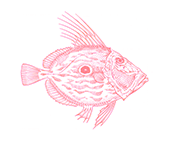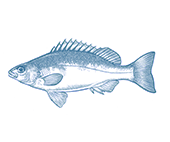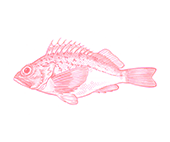



- Better Choice
Wild Caught
Region:
NSW, VIC, TAS
- Removing sea urchins in climate-impacted waters helps to build resilience to vital kelp-reef ecosystems
- Long-spined sea urchins are native to Australia, but numbers in some areas have dramatically increased due to warming waters and overfishing of urchin predators. As a result, urchins are considered a ‘climate invader’ in TAS.
- High urchin numbers lead to destruction of kelp forests which urchins graze on. Kelp forests are vital ecosystems for many other marine species.
- Some sea urchin fisheries are unique in that they operate, at least in part, with overfishing as a goal in an effort to restore damaged ecosystems caused by urchin overabundance.
- Sea urchin fisheries around south-eastern Australia target long-spined, purple and red sea urchins, collecting them by hand.
- As urchins are collected by hand, other marine animals are not harmed.
Supporting sea urchin fisheries can actually help reduce the impact of climate change on our cool-water marine environment.

Sea Urchin, often sold as ‘Uni’ (its Japanese name), is a delicacy much prized by those in the know. The small ‘roe’ or ‘tongues’ (neither are truly accurate descriptions) are soft, rich, sweet and briny. They are often eaten raw, served on a cracker or toast as a canapé, or draped over warm rice for a larger meal. They can also be tossed through a simple pasta with little more than olive oil, lemon and parsley. The rich, briny, oceanic sauce that results is a real treat.
Region caught:
NSW Sea Urchin and Turban Shell Fishery (126t in 2022)
VIC Sea Urchin Fishery (83t in 2022/23)
TAS Commercial Dive Fishery (549t in 2022/23)
Commercial sea urchin fisheries operate around the southeast of Australia, collecting three species: the long-spined, purple and red sea urchin. All these species live on the seafloor, feeding on algae in shallow reef habitats.
While all species occur naturally in Australia, the long-spined sea urchin is considered a ‘climate invader’ in Tasmania and some areas of Victoria. Climate change has allowed it to establish populations where it previously could not. Numbers have dramatically increased by 75% in 15 years in eastern Tasmania.
Due to previous overfishing of urchin predators, such as snapper and southern rock lobster, long-spined sea urchin don’t have enough predators to keep their numbers in check, and the species is responsible for overgrazing of kelp forests, leading to ‘urchin barrens’ – empty habitats devoid of plant life.
The giant kelp forests of southeastern Australia have been declared as an endangered ecological community due to the voracious grazing from sea urchins.
Sea urchin fisheries in Tasmania and Victoria are highly unusual in that they operate, at least in part, with overfishing as a goal in an effort to restore damaged ecosystems caused by urchin overabundance.
The level of take of urchins is fairly poorly controlled, which means there are few ways to cap fishing. With current low levels of fishing activity in NSW and VIC, this is not a concern but would need to be reviewed if catch levels significantly increased.
Sea urchins are hand collected by divers, usually taken while also diving for other species such as abalone and turban shells. Hand collecting is effective at only targeting the desired species, resulting in a negligible impact of extraction on any other marine species.


